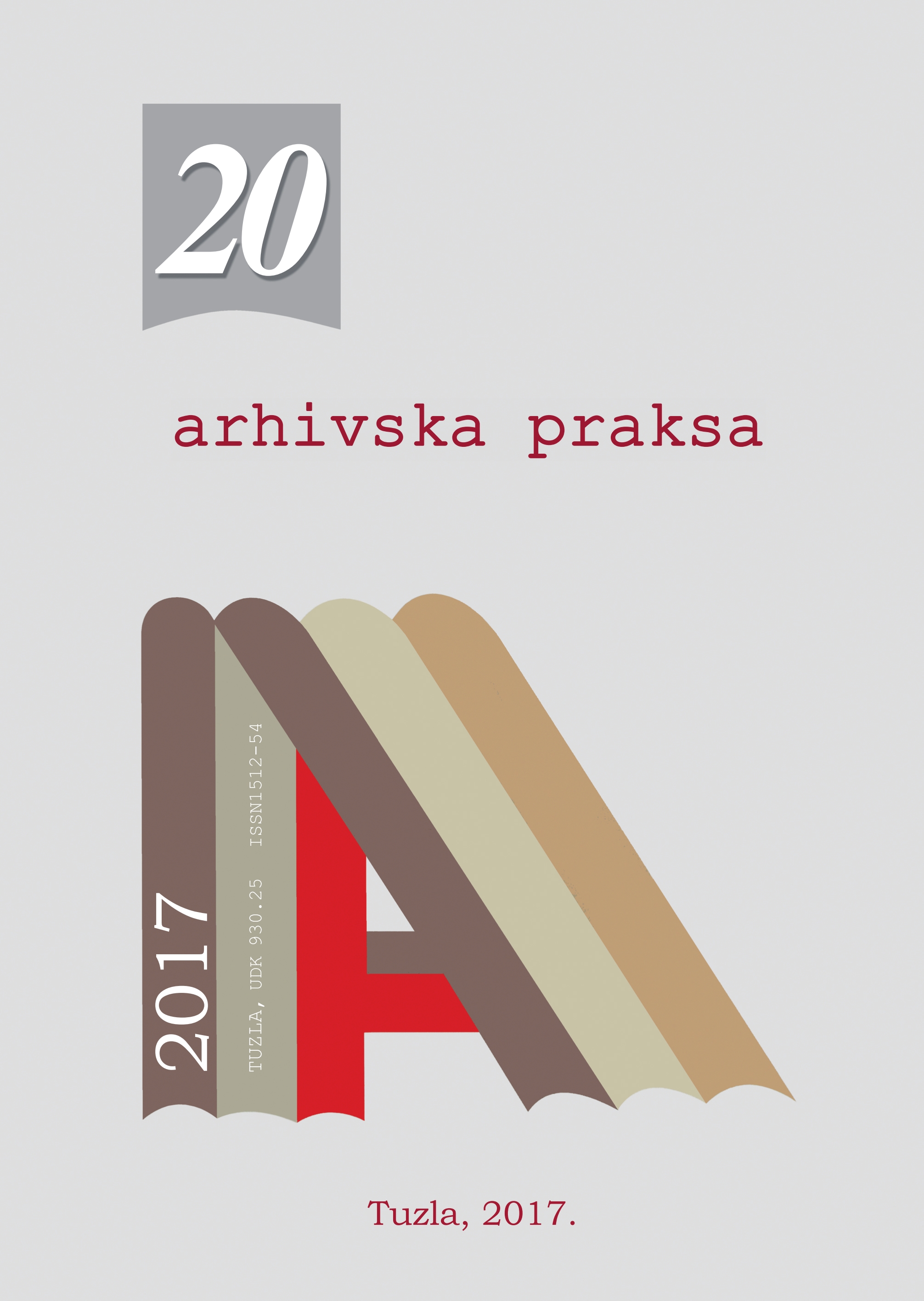ZAŠTITA NEKONVENCIONALNOG GRADIVA U NASTAJANJU NA PRIMJERU KATEGORIZIRANOG STVARATELJA
PROTECTION OF UNCONVENTIONAL RECORDS – EXAMPLES OF CATEGORIZED RECORD CREATORS
Author(s): Branimir PetiSubject(s): Archiving, Information Architecture, Preservation, Education and training
Published by: Arhiv Tuzlanskog kantona
Keywords: Unconventional material; material protection; creators; categories; electronic records;
Summary/Abstract: Digital processing of the document starts the process of computerization, so the document becomes information, or part of the information communication technology (ICT) system. The document as such becomes easier and faster available to users, significantly reduces the possibility of its destruction, but despite the stated advantages of such use, such a system also has shortcomings that can have unforeseeable consequences. A variety of causes can lead to unavailability or loss of information in electronic form: from natural disasters, equipment failure, software errors, to human actions. The human factor can act outwardly or internally, and damage can be caused by chance or intent. At the aforementioned creator, we’ve determined that the application that he is running due to the fact that the concept of archiving in the application does not really mean the actions that we include under the term archiving in the classical sense. In this application, the document is “archived” in a file and lost for us. It would be advisable to create a program that would certainly involve archival workers and computing staff together. This program should archive the “archived” documents. This means: first you should separate the documentary material from the archive; Secondly, it should contain a special list of guarding times for each creator in particular; Thirdly, it should warn of the expiration of the timeframes for the preservation of the documentary material and propose a substance to which the retention period expired; Fourth, create a summary inventory list; And fifth, make informational aids. When submitting electronic archive material to archive, the material should be in electronic format that can be viewed through applications that are available on all computers and do not require special browsers. Finally, such an application should include the ability to quickly and easily access the content of archival material in electronic form by means of a device that monitors the archivist.
Journal: Arhivska praksa
- Issue Year: 2017
- Issue No: 20
- Page Range: 347-354
- Page Count: 8
- Language: Bosnian, Croatian, Serbian

